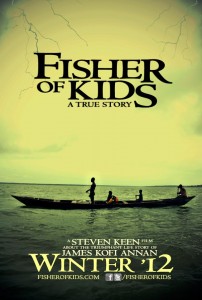CLC Joins other NGOs in Applauding Downgrade of Thailand in 2014 Trafficking Report Rankings
![]() Letter to Secretary of State John Kerry regarding Thailand’s downgrade in the 2014 TIP Report
Letter to Secretary of State John Kerry regarding Thailand’s downgrade in the 2014 TIP Report
Publication Date:
June 20, 2014
Dear Secretary Kerry:
We write today to applaud the U.S. State Department’s decision to downgrade Thailand to Tier 3 in the 2014 Global Trafficking in Persons Report. This decision is justified and an important step in international efforts to persuade the Royal Thai Government to begin making the difficult, but necessary, changes needed to bring themselves into compliance with the minimum standards of the Trafficking Victims Protection Act.
We also believe the Tier 3 ranking, as well as the research and recommendations contained in the report, will be an important informational tool for international and Thai institutions, companies and investors that continue to press Thai authorities to move beyond their current approach. It comes at an opportune time. In the last year, reports from, CNN, BBC, Reuters, The Associated Press and The Guardian have drawn unprecedented attention to the issue. To truly make sufficient progress in addressing human trafficking, the Thai Government should implement reforms in the areas highlighted both in the 2013 TIP Report and our last letter to you. These reforms have been repeatedly recommended by the U.S. State Department, other governments, NGOs, trade unions, and international bodies: improving victim identification and protection; fighting corruption; reforming immigration policies; and revising labor laws.
Given these priorities, we believe the United States should also emphasize to Thailand the importance of ratifying the International Labour Organization’s new legally-binding protocol to Convention 29 on Forced Labor in its upcoming discussions with the Thai Government. If Thailand were to ratify the protocol and bring its laws into compliance, it would help address many of the issues above, and be an important tool for those on the ground working to bring justice to victims of human trafficking. The United States should also press Thailand to amend the Labor Relations Act of 1975 to allow non-Thai nationals to organize and lead labor unions, and participate in collective bargaining, so that migrant workers would be in a better position to defend themselves against exploitative employers, and ratify ILO Conventions 87 (Freedom of Association and Protection of the Right to Organize) and 98 (Right to Organize and Collective Bargaining).
We thank you for your efforts at combating human trafficking, as well as the Bureau of Democracy, Human Rights, and Labor; the Ambassador at Large and Office to Monitor and Combat Trafficking in Persons; the East Asian and Pacific Affairs, and the U.S. Embassy in Bangkok for your ongoing efforts to raise these issues with your counterparts and bring about the change needed on the ground to prevent human trafficking in Thailand.
Signed:
American Federation of Labor-Congress of Industrial Organizations (AFL-CIO)
Child Labor Coalition (CLC)
Fairfood International
Fair World Project
Food Chain Workers Alliance (FCWA)
Green America
Human Rights Watch
Interfaith Center on Corporate Responsibility (ICCR)
International Labor Rights Forum (ILRF)
National Consumers League (NCL)
Slave Free Seas
Synod of Victoria and Tasmania Uniting Church in Australia



